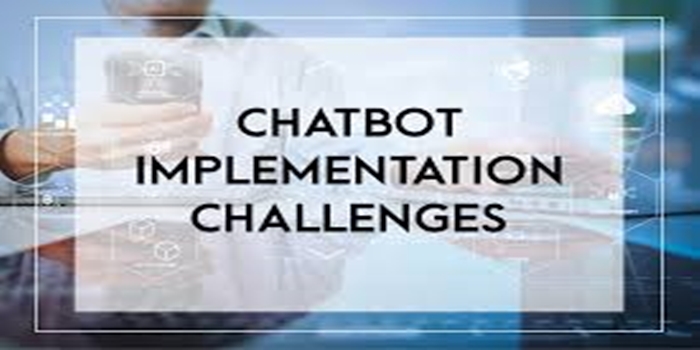In this article, we discussed the meaning of chatbot implementation, the steps, the types, the strategies, we also talked about the benefits.
Definition
“Chatbot implementation” means the process of designing, developing, and integrating a chatbot into a system, essentially setting up a virtual conversational agent that can interact with users through text or voice, usually to automate tasks or provide information on a platform like a website or messaging app; it involves defining the chatbot’s purpose, building its conversational flow, and connecting it to the desired communication channels to be accessible to users.
facts about chatbot implementation
Goal-oriented:
The first step is to clearly define what the chatbot is meant to achieve, whether it’s answering basic customer questions, guiding users through a process, or providing personalized recommendations.
Design and development:
This involves creating the conversational flow, defining the range of questions the chatbot can answer, and programming the responses using natural language processing (NLP) technology.
Integration with platforms:
Connecting the chatbot to the chosen communication channels like a website, mobile app, or messaging platform so users can interact with it.
Testing and refinement:
Thoroughly testing the chatbot to identify any errors or awkward interactions, and then making necessary adjustments to improve its performance.
Steps in chatbot implementation:
Define your goals and objectives:
Clearly identify what you want the chatbot to achieve, whether it’s answering basic customer queries, generating leads, providing product information, or something else.
Understand your target audience:
Analyze your customer base to understand their needs, pain points, and preferred communication style to tailor the chatbot accordingly.
Choose a chatbot platform:
Select a platform that aligns with your technical skills, budget, and desired features, considering options like cloud-based solutions or custom development.
Design the conversational flow:
Create a logical structure for the chatbot’s interactions, mapping out potential user questions, responses, and branching paths to guide the conversation.
Develop the knowledge base:
Gather relevant information and data to train the chatbot, including frequently asked questions, product details, and key responses.
Train the chatbot:
Use the prepared data to train the chatbot’s natural language processing (NLP) model, allowing it to understand user intent and provide appropriate answers.
Test and refine:
Thoroughly test the chatbot with various scenarios and user queries, identifying areas for improvement and adjusting the responses as needed.
Integrate with existing systems:
Connect the chatbot to your website, CRM, or other relevant applications to enable seamless user experience.
Launch and monitor:
Deploy the chatbot and closely monitor its performance, tracking key metrics like user engagement, conversion rates, and customer satisfaction.
Continuously optimize:
Gather user feedback and use it to refine the chatbot’s responses, improve its knowledge base, and adapt to changing needs.
Important considerations:
Personalization:
Tailor responses to individual users based on their previous interactions or profile information.
Error handling:
Implement mechanisms to gracefully handle unexpected user input or situations where the chatbot cannot provide a clear answer.
Accessibility:
Ensure the chatbot is accessible to users with disabilities by providing alternative text and supporting assistive technologies.
The Types of Chatbot Implantation
Here’s a breakdown of each type:
Rule-based Chatbots:
These operate on predefined rules and decision trees, responding to user queries based on keywords and determined options, suitable for simple questions and straightforward interactions.
AI-powered Chatbots:
Utilizing natural language processing (NLP) and machine learning, these chatbots can understand complex language, interpret context, and generate more natural responses, adapting to diverse inquiries.
Hybrid Chatbots:
Combining the strengths of both rule-based and AI-powered systems, they use rules for basic questions and leverage AI for more complex interactions.
Menu-based Chatbots:
Guiding users through a series of buttons or options to navigate through a conversation and access information.
Voice Chatbots:
These chatbots interact through voice commands, requiring speech recognition technology to understand user input and respond verbally.
Key points to consider when choosing a chatbot implementation:
Complexity of user queries:
For simple questions, a rule-based chatbot might suffice, while more complex interactions require AI capabilities.
Desired level of personalization:
AI-powered chatbots can personalize responses based on user data and past interactions.
Integration with existing systems:
Consider how the chatbot will connect with your current platforms and data sources.
Benefits of chatbot implementation:
Improved Customer Service:
Immediate Availability: Chatbots can provide instant support to customers around the clock, eliminating wait times.
Faster Response Time: Quickly answer frequently asked questions and resolve basic issues.
Personalized Interactions: Tailor responses based on customer data for a more relevant experience.
Cost Reduction:
Reduced Human Labor: Automate repetitive tasks, allowing human agents to focus on complex issues.
Lower Operational Costs: Minimize the need for large customer service teams.
Enhanced Sales and Marketing:
Lead Generation: Qualify potential customers through initial interactions
Upselling and Cross-Selling: Recommend relevant products or services based on customer needs
Proactive Engagement: Initiate conversations with potential customers
Data Collection and Analysis:
Customer Insights: Gather valuable data on customer behavior and preferences through interactions
Improved Targeting: Use insights to refine marketing campaigns and product offerings
Other Benefits:
Multilingual Support: Cater to a diverse customer base with language translation capabilities
Appointment Scheduling: Allow customers to book appointments directly through the chatbot
Feedback Collection: Gather customer feedback to improve service quality
Important Considerations:
Proper Training: Train the chatbot with accurate information and appropriate responses to ensure effective interactions.
Integration with Existing Systems: Seamlessly connect the chatbot with other business systems for comprehensive data access
Scalability: Choose a chatbot platform that can adapt to growing customer needs.
Conclusion
Chatbot implementation is the process of creating and launching a chatbot to interact with customers. A successful chatbot implementation strategy involves defining goals, gathering information, and testing the chatbot before launching it.


